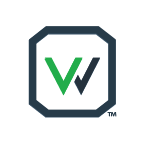HAZARDOUS WASTE RECYCLING – REUSE – RECLAIM IS NOT AS EASY AS 1- 2- 3
October 7, 2019

A Daunting Task
As environmental service professionals, we are on the front lines of the fight to conserve resources and preserve the planet. But efforts to recycle, reuse, or reclaim hazardous waste materials can be a daunting task. The fact is that it is really easy to just replace or upgrade items without giving any thought to what happens to the products being replaced. Even when we do the right thing and consider the waste impacts of replacement, very strict Federal and state solid hazardous waste regulations concerning recycling and reuse can be complex and confusing.
Complex and Confusing
To begin to understand the regulations pertaining to recycling and reuse, we should first understand the regulatory terminology typically used with respect to recycling materials that are subject to solid waste regulations. According to 40 CFR 261.1(c)(4) a material is reclaimed if it is processed to recover a usable product or if it is regenerated. A simple example is a process to recover lead values from spent batteries. A more complex example is explained in 261.4(a)(23) and (24), which stipulates that smelting, melting, and refining furnaces are considered to be solely engaged in metals reclamation if the metal recovery from the hazardous secondary waste materials meet the same requirements as those specified for metals recovery from hazardous waste found in 266.100(d)(1) through (3) of this chapter and if the residuals meet the requirements specified in 266.112 of this chapter.
The point here is that every process should be evaluated in light of the statutory definitions and cross-referenced against applicable regulations. The highlights above are by no means the most complex examples, and the environmental service professional can quickly get confused or run afoul of legal requirements without careful consideration of and research about regulatory requirements. The upshot is that recycling of hazardous waste materials is not easy and takes considerable effort. Preserving and reusing critical resources on this planet, while still operating under a free market economy is a difficult balance. Unfortunately, this process is not going to get any less complicated as consumers and government continue to push for responsible waste handling in light of environmental challenges.
How WASTELINQ Helps
The WASTELINQ platform helps cut through the confusion. WASTELINQ provides an operational workflow that prompts the environmental manager to consider the relevant regulatory topics and provides links to resources that might help alleviate some of the burdens. Recycling, reclaiming, and reusing hazardous waste may never be as easy as we would like it to be, but WASTELINQ provides a helpful tool and a great resource for making this critical activity easier for the typically overloaded EH&S Manager. For more information about WASTELINQ, visit www.WASTELINQ.com or call Sean Easton @ 713-859-8252.